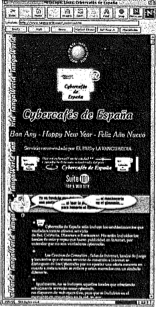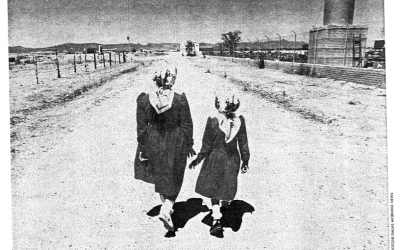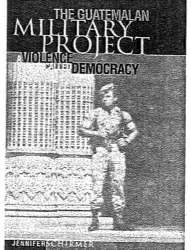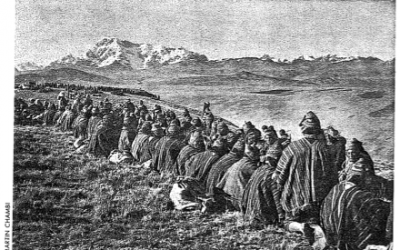Bringing the Net to the Masses
Cybercafes in Latin America

From the Internik cybercafe in Buenos Aires, Argentina, to the Internet Link Club in Andheri, India, Internet cafe-based access centers have been springing up across the world. The leading Internet cafe resources online– the Cybercafe Search Engine (http://cybercaptive.com/) and the InternetCafe Guide (http://www.netcafeguide.com) list about 2,000 cybercafes in 110 countries, quite a few in Latin America.
Much of the success of the Internet as an information economy and as a new medium depends on affordable, near-universal access to the Net in countries across the globe. In emerging economies, numerous projects have been launched in this regard incorporating public Internet kiosks, cybercafes, community access centres, and multimedia communication booths.
Numerous studies, like the Harvard Information Infrastructure Project’s Public Access to the Internet (edited by Brian Kahin and James Keller), focus on government initiatives for providing widespread Internet access to the general public. Another approach draws on entrepreneur-driven initiatives, such as the cybercafes in Latin America.
For instance, WorldTel chairman Sam Pitroda recently signed a high-profile agreement worth $50 million with the Tamil Nadu government in India, to set up 1,000 Internet community centers with up to 20 terminals each, thus providing widespread Internet access as well as employment for up to 50,000 people. WorldTel first experimented with such concepts in Latin America, in countries like Peru and Mexico.
In many Latin American countries, cybercafes are becoming a key part of the tourism and Web solutions industries, as well as a way of connecting to the Latin American diaspora in the United States and Europe. In many emerging economies throughout the world, cybercafes are often the local people’s only means of accessing the Internet.
The streets between Avenida Amazonas and Juan Leon Meron in Quito, Ecuador– home to many tourist hotels and restaurants — also host an astonishing density of Internet cafes: almost a dozen in an area of just a few blocks.
Many of these Internet cafes — offering a mix of Internet access, coffee, snacks and even a book exchange — are less than three months old, such as the Interactive Cafe on Fosch Street.
“We have seen almost 12,000 customers since we opened three months ago. About 90 per cent of the Internet users are foreign tourists, the rest are local Ecuadorans,” says Paul Konz, manager of Interactive Cafe.
The Cafe has 14 computers connected to the Net via a leased line which costs US$1,500 a month. “We hope to have as many as 20 computers next year,” says Konz. He hopes to break even by the end of next year, a projected window also shared by the owners of some of the other Internet cafes, like Aaron Stern, proprietor of the PapayaNet cybercafe.
“We get up to 300 people a day, about 25 per cent of whom are locals,” claims Stern. PapayaNet’s services are advertised in local newspapers, tourism brochures, and at the airport in Quito.
“In addition to free mail services like Hotmail, our customers are heavy users of IDT’s popular Net2Phone service,” says Stern.
The Internet telephony service in Ecuador can help cut costs of calling Europe from an average of two dollars a minute down to about 30 cents a minute. Unfortunately, this may not be a feasible offering in countries like India, where Internet telephony is banned.
Charges for Internet access in the cybercafes of Quito vary from 15,000 sucres to 20,000 sucres an hour (1USD = 6,750 sucres).
However, stiff competition from neighboring cybercafes is forcing some of them to expand their services into franchised operations in other cities in Ecuador as well as other countries in Latin America; some are even beginning to offer Web solutions like Web site design and hosting.
Stern plans to extend his PapayaNet chain to Peru and Colombia. Oscar Imbaquingo, proprietor of InternetCafe, plans to set up cybercafes in the Ecuadoran cities of Cuenca and Guayaquil. He has just begun setting up Web sites for local companies, and has about 12 clients — most of them tourist agencies.
Web solutions are also an integral part of the business model for Internet company AltesaNet , which runs a cybercafe called Monkey. “We get a steady stream of tourists and locals to the cybercafe, but our real target is the e-commerce market in Ecuador,” says Rene Crespo, president of AltesaNet.
The company has designed and hosted Web sites for over 70 clients in Quito, and also manages the online promotion for events like a local beauty pageant. The cybercafe is used to demonstrate Web marketing techniques for prospective clients, and to conduct training classes. The café was also publicized at the recent Compu ’98 national PC Expo in Quito.
Other Internet cafes in the neighborhood – like PlanetaNet – offer membership programs with discounted fees for regular Internet users. “We also offer 10 to 15 per cent discounts for high school students. We may even open an art gallery to attract tourists,” says Galo Fierro, proprietor of PlanetaNet.
Given the dependence of the Ecuadorian economy on tourism, it seems clear that cybercafes are going to play an important role in the tourism segment — both for visiting tourists trying to communicate back home as well as tourism agencies hoping to learn more about the interests and preferences of tourists.
In contrast, just across the border in Colombia, cybercafes have not been doing so well in cities like Bogota. “The high costs of leased lines – US$2,500 for a 64 Kbps connection – have not made it easy for cybercafes to flourish. Many have now closed shop,” says Christian Boehlke, business director for Web solutions company Axesnet www.axesnet.com.
Further up north in San José, Costa Rica, Internet access centers are faring much better. A steady stream of Internet users visits the numerous photocopy shops doubling as Internet access centres, such as Internet Point near the University of Costa Rica. The handful of thriving cybercafes includes the InternetCafe with 50 computers, and the more modest CyberCafe, near Teatro Nacional, with 10 PCs.
“We charge about $4 an hour for Net access, and get about 50 people a day. We offer Web training sessions for local businesses for $15 an hour, and also publish Web sites,” says Roger Pilón, CyberCafe proprietor.
His company has published tourism-oriented sites for local car rental services (www.carentals.com) and real estate companies www.goisthmus.com. But what really sets his operation apart from the others is the ambitious search engine and directory service www.searchcostarica.com he has launched for Costa Rican Web sites. The service is currently in English, and will be expanded to include Spanish content.
“These new services are bound to increase traffic to my search site as well as to my CyberCafe,” Pilón says. The CyberCafe is being promoted in local media and in tourism fairs in Europe.
Ernesto Rivera, an Internet columnist at La República, is optimistic about the prospects for cybercafes in Latin America. “Many of them offer good, cheap access to the Internet, and nurture local communities of Internet enthusiasts. The Net is very much in vogue among students, foreigners, businessmen and tourists — and entrepreneurs with vision and luck are bound to succeed with cybercafe ventures,” he concluded.
Winter 1999
Madanmohan Rao (madanr@planetasia.com), reported on the Internet cafe scene while on tour in Colombia, Costa Rica and Ecuador. Rao is Principal Consultant at Bangalore-based Web solutions company Planetasia.com and a contributing editor for the Internet Society’s magazine “On The Internet.” He was a speaker at the Computer Professionals for Social Responsibility’s “One Planet, One Net: The Public Interest in Internet Governance,” an International Symposium at MIT in October, co-sponsored by the Harvard Information Infrastructure Project.
Related Articles
Linking Latin America
I have captured images of such seemingly disparate subjects as Mennonite immigrants to Mexico, Latina contestants for Selena standings, the Pope in Cuba, and traditional Sunday serenatas…
A Violence Called Democracy
As any journalist or diplomat who has spent time in Guatemala will attest, no group there is more difficult to penetrate than the Guatemalan Armed Forces. As much a caste as an institution, the…
Researching Latin America
The instant outpouring of Web information on the Pinochet case got me to thinking about communications on my first trip to Chile during the Allende presidency. I was armed for Ph.D…




